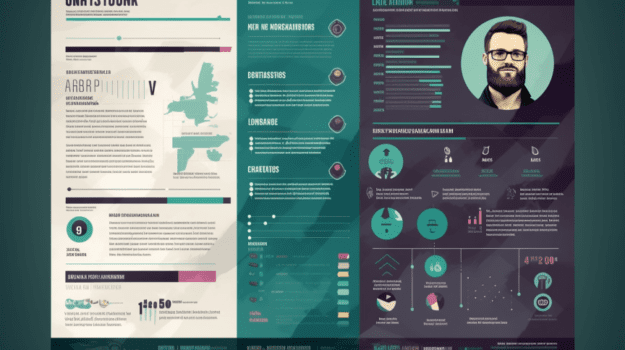Introduction
Are you considering a career transition to Information Technology (IT) but lack a technical background? Fear not! This step-by-step guide will help you navigate the process and overcome challenges along the way. Transitioning into IT offers job security, competitive salaries, and growth opportunities. Let’s explore how you can successfully transition into the exciting world of IT.
Step 1: Understanding the IT Industry

To start, familiarize yourself with the IT industry. Research current trends, attractive IT roles, and salary expectations. This will help you determine if IT aligns with your interests, goals, and skills.
Step 2: Researching Different IT Roles

IT offers a wide range of roles, from computer engineers to software developers to cybersecurity analysts. Research roles that interest you and learn about the required skills and qualifications. This will guide your learning path and set achievable goals.
Step 3: Identifying Your Transferable Skills

Non-technical backgrounds still offer valuable skills. Identify transferable skills such as problem-solving, project management, and communication. These skills are highly sought after in the IT industry and will make you stand out.
Step 4: Gaining Technical Knowledge and Skills

Acquiring technical knowledge and skills is crucial. Consider these options:
– Online Courses: Enroll in flexible and affordable online courses on platforms like Coursera, Udemy, and edX. They cover programming, database management, and cybersecurity.
– Bootcamps and Internships: Join intensive programs or internships for hands-on experience and practical skills.
– Certifications: Obtain industry-recognized certifications like CompTIA A+, CCNA, or CISSP to showcase your expertise.
Step 5: Building a Network in IT

Networking is essential in IT. Here’s how to build your network:
– Join Professional Organizations: Become a member of organizations like ISACA or IEEE Computer Society. They offer networking events, job boards, and professional development.
– Attend Networking Events: Participate in conferences, meetups, and industry events to meet professionals, stay updated, and expand connections.
– Volunteer: Engage in tech-related events or organizations as a volunteer to meet like-minded individuals and gain hands-on experience.
Step 6: Crafting an IT Resume

Your resume plays a vital role in securing an IT job. Consider these tips:
– Highlight Transferable Skills: Emphasize relevant skills and demonstrate how they relate to the IT role you’re applying for.
– Use Relevant Keywords: Incorporate keywords specific to the IT role to increase visibility to automated screening tools.
– Include IT-Related Experience: Showcase IT projects or courses you’ve completed to demonstrate practical knowledge.
Step 7: Applying for IT Jobs

Increase your chances of success with these steps:
– Create a Strong Cover Letter: Express your passion for IT and highlight relevant experience or skills.
– Interview Preparation: Familiarize yourself with common IT interview questions. Practice articulating your motivations, discussing technical projects, staying updated, and addressing strengths and weaknesses.
Common Interview Questions to Expect:
• What motivated you to pursue a career in IT?
• Can you tell us about a technical project you recently completed?
• How do you stay current with the latest trends and technologies in the industry?
• What are your greatest strengths and weaknesses?
Step 8: Starting Your IT Career

Congratulations on landing your IT job! Ensure a smooth transition with these tips:
– Adapt to the Work Environment: Be patient, observe colleagues, and take advantage of training programs.
– Pursue Growth and Development: Stay updated on IT trends. Seek professional development opportunities like conferences or online courses.
– Overcome Impostor Syndrome: Embrace self-doubt as normal, focus on achievements, and embrace learning and growth.
Step 9: Advancing Your IT Career

Consider these factors for career advancement:
– Continuous Learning: Stay informed about new technologies. Upgrade skills through courses, workshops, and certifications.
– Build a Personal Brand: Stand out by showcasing skills, accomplishments, and thought leadership on social media and professional networks.
– Take on Leadership Roles: Seize opportunities to develop skills and gain experience as a project manager or team leader.
Conclusion
Transitioning into an IT career from a non-technical background is achievable. Follow this step-by-step guide to navigate challenges and embark on a rewarding career in the thriving IT industry. Stay curious, embrace continuous learning, and leverage transferable skills to thrive in this exciting field. Good luck on your IT journey!
Frequently Asked Questions

1. Is a degree necessary for a career in IT?
While beneficial, a degree is not always necessary. Many IT professionals gained skills through bootcamps or online courses.
2. How long does it take to transition into a career in IT?
The time required varies based on individual circumstances and effort invested. It can range from months to years.
3. How much do IT professionals typically earn?
IT salaries vary widely. The median annual wage for computer and information technology occupations was $91,250 in May 2020.
4. Are there age restrictions for transitioning into an IT career?
No, age is not a restriction. Many have successfully switched careers later in life.
5. What are common misconceptions about IT careers?
Misconceptions include being limited to technical backgrounds, long hours, and lack of creativity. In reality, IT offers creativity, problem-solving, and job satisfaction.
6. Why should I consider transitioning to a career in IT?
The IT industry has been steadily growing for several years, and it isn’t showing any signs of slowing down. In fact, the pandemic has only increased the demand for IT professionals.
According to the Bureau of Labor Statistics, employment of computer and information technology occupations is projected to grow 11% from 2019 to 2029, much faster than the average for all occupations. IT roles offer excellent job security, competitive salaries, and opportunities for career advancement.
Remember, transitioning into IT requires dedication, perseverance, and continuous learning. With the right mindset and passion for technology, you can succeed in this thriving industry.




